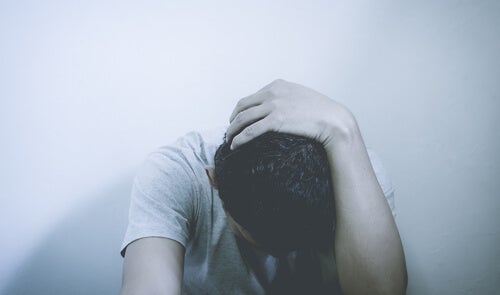Sensory Deprivation and its Frightening Effects

The first studies on sensory deprivation date back to the 1950s. It’s possible, however, that there were secret studies even before that decade. Researchers from McGill University in Montreal, Canada were the first to conduct related experiments with volunteers.
In its most basic form, sensory deprivation is the partial or total restriction of stimuli applied to one or several senses. It means blocking sight, hearing, touch, or everything at the same time. People have used these types of practices for therapeutic or research aims, as well as for torture.
Unfortunately, people started to become interested in sensory deprivation due to this last use. After World War II, there were reports of prisoners who would confess without being beaten. It was enough torture for their jailers to deprive their senses of environmental stimuli to produce great changes to their willpower.

Conditions of the experiments
In principle, the experimenters employed just three types of experimental conditions regarding sensory deprivation. At least, this is the case for the studies we know about.
The first is Bexton, Heton, and Scott’s study that dates back to 1954. Secondly, we have Wexler, Mendelson, Liederman, and Solomon’s study from 1958. The third is Shurley’s study from 1960.
- First situation. The sensory deprivation isn’t absolute. The volunteer lays on a bed inside of an isolated but lit room. They wear dark glasses, gloves, and some cardboard capsules on their hands. They remain there for two to six days.
- Second situation. The volunteer lays down on a mattress inside of a capsule that limits their movements. This capsule is a room with bare walls and a minimal amount of light. They remain in this situation for 36 hours.
- Third situation. The researchers submerge the completely naked volunteer in a water tank. They wear a mask that allows them to breathe, but not to see or hear anything. They don’t touch the bottom of the tank. The volunteer remains in this situation as long as they can last.
Sensory deprivation and perceptive processes
The experiments that the researchers conducted evaluated, first of all, whether these conditions altered the perceptive processes. They concluded that they did. The deprived experience, above all, involved strong visual disruptions. The volunteer will see static objects as being in movement and changing shape or size.
They come to see things such as the walls moving and tables walking. They also have a greater level of visual sensitivity. After several days, they perceive stimuli more slowly. Subjects come to see straight likes as “S’s”. They also experience other hallucinations.
At the same time, there’s also a generalized disorientation in terms of touch and the perception of space and time. In one of the experiments, researchers showed how the effects of social isolation are similar to those of sensory deprivation.
Cognitive effects
Many of the volunteers indicated that they wanted to use their participation period in the experiment to think about personal problems for which they hadn’t had time. In the beginning, they were able to do so, but as the hours went on, it became more and more difficult to concentrate on their thoughts. After a certain amount of time, they were incapable of even counting to 30.
The researchers found that the subjects’ capacity for memorizing and retaining information improved after the experiments. At the same time, however, the capacity for abstracting, generalizing, and undertaking mathematical reasoning was reduced.
Surprisingly, the capacity for learning improves in people who go through sensory deprivation over those who don’t. However, their motor skills erode markedly, especially after being deprived of stimuli for 48 hours or more.

Some interesting conclusions about sensory deprivation
In simple terms, all the experiments showed that it’s possible to induce states of pseudopsychosis through sensory deprivation. That’s temporary psychosis. We add the prefix “pseudo” because once the experiment is over and the participant goes back to their normal life, they also recover all of their normal abilities.
One of the most interesting results was that so-called “normal” people experienced hallucinations during sensory deprivation. In those people diagnosed with schizophrenia, though, said hallucinations tended to disappear.
In the same way, the researchers found that the personality of each individual plays a role in how they will experience sensory deprivation. All of the volunteers make efforts to adapt to the conditions, but a good part of them tend to focus on the past and go into depression. Almost all of them become much more suggestible. This causes the effects of psychological torture in this state to be all the more profound, as well as those of psychological therapy.
All cited sources were thoroughly reviewed by our team to ensure their quality, reliability, currency, and validity. The bibliography of this article was considered reliable and of academic or scientific accuracy.
- Ardila, R. (1970). Privación sensorial. Revista Interamericano de Psicologia, 4, 253.
This text is provided for informational purposes only and does not replace consultation with a professional. If in doubt, consult your specialist.








